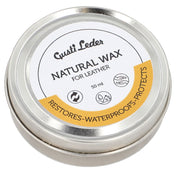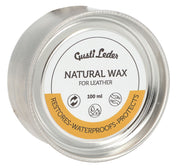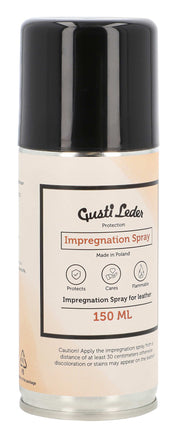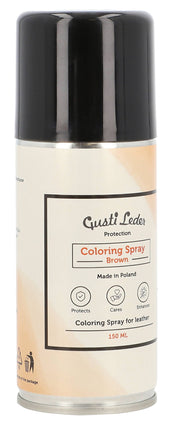The color of leather is primarily determined by the tanning agent. Vegetable tanning gives the leather its brown color, alum tanning and synthetic tanning give it a white color, lye tanning gives it a yellowish hue, and chrome tanning gives it a blue-gray color. After the tanning process is complete, two further types of leather coloring are possible:
1. Coloring
This type of dyeing is widespread. For dyeing, the leather is dipped in a vat of a dye, such as ink. It's important that the dye is set and the excess color is rinsed out to prevent the leather from staining too much later. Ideally, the leather is dyed all the way through, unless variations are desired for design reasons.

2. Pigmentation
Often, after the dyeing process, worn leathers are given an additional protective pigment-based coating that is sprayed onto the surface. Most leather products have a protective pigment coating. This pigmentation can be recognized by the way water droplets bounce off them.

Pigments can be used to create almost any leather color, including luminous and metallic effects. The transparent protective varnish, which is responsible for the leather's stability and gloss, is called a "top coat." Since a layer of pigment can often make the leather harder, the tanner must decide whether the leather should be soft or easy to care for, as it's not possible to achieve both properties simultaneously. Beneath the pigment layer, the leather is often dyed throughout to minimize the contrast caused by wear.
Additional sources (accessed 21.01.2019):
- leder-info(punkt)de/index.php/lederfarben





